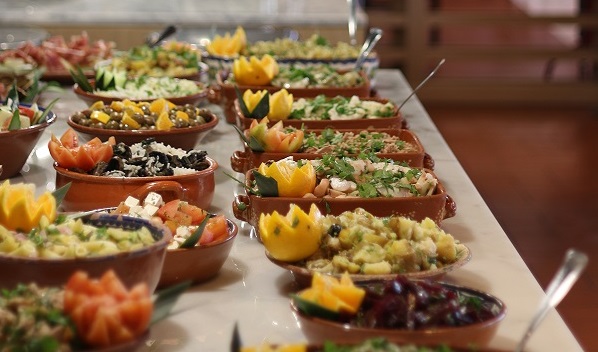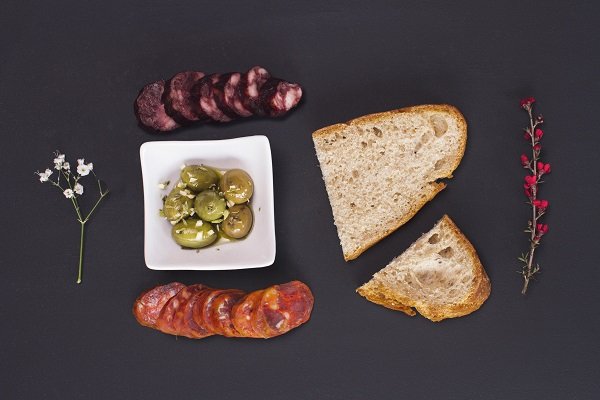This year has been one of firsts — and not good ones, at that. On the culinary front, it’s the first year since 1981 that the town of Santarem in the Alentejo is not hosting its annual National Cullinary Festival. But that’s reason enough that foodies should plan to visit this town that’s most noted for its Gothic monuments in 2022, when the festival, Portugal’s main culinary fair, is expected to be held once again.
Wander the restaurant booths during the 10 days or so of the festival — it’s typically held in October — and you’ll be able to sample dishes from each of the 18 different regions in the country plus the Azores and Madeira. Pay as you go, or, before the festival begins, purchase a booklet of tickets. (Oenophiles will also delight in the wine tastings.)
Though many visitors may be familiar with a few of the standard items in Portugal’s culinary lexicon, such as bacalhau (dried salted codfish), caldo verde (cabbage soup), grilled sardines and pasteis de nata (egg custard tarts), this festival offers the opportunity to try delicious bites of traditional items that might not have been on your must-try list. Here are 10 tasty dishes that you likely will find at the National Cullinary Festival.
Morcela
The name says it all. This black sausage, also known as blood sausage, is made with pork fat blended with pig’s blood, flour (or rice), wine and spices that may include cumin and cloves. Though you might want to skip this dish, don’t. You’ll likely appreciate the intensely rich flavor of thinly sliced, fried morcela — it’s actually soft in texture — along with a slice of crusty bread as an appetizer.
Dobrada
This hearty stew combines tripe (lamb’s or cow’s intestine) with white beans in addition to carrots, onions, garlic, bay leaf, and sometimes bacon and chourico (spicy Portuguese sausage). Served over rice, this dish originated centuries ago in Porto when it’s said that the residents gave all their quality meat to the troops fighting in Africa, leaving them only with lesser quality organ meats. But, don’t turn up your nose at this dish where the tripe, though a bit chewy, takes on the complex flavors of the ingredients.
Carne Maronesa
Maronesa is a special breed of Portuguese cattle that is native to the 5,000-foot high Serra do Marao mountains in Northern Portugal. (In fact, their name derives from the mountain’s name.) What other type of cattle but this stocky breed with curved horns could survive this rugged environment where wolves roam? Chefs often grill the nicely marbled cuts, resulting in a juicy steak with a delicate flavor. Cracas
Given that you’ll be staring at what looks like cone-shaped rocks, this might be the one food that many diners are not sure how to eat. In fact, what you’ve got on your plate is the shell of the barnacle that’s found in the Azores where fishermen have to pry them away from rocky cliffs that they are attached to. Typically, the barnacles are steamed and served cold. And, though they are odd looking, their meat is delicate and their flavor is sweet. Eat cracas and their juices and it’s like tasting the sea.
Arroz de Lingueirao
Lingueirao are razor clams that, like their name denotes, have a long, thin shape, like a straight razor. (If they are served chopped, you won’t see their elongated body.) So, they don’t resemble what you think of as a clam. But, though their meat is firm, it’s sweet with a bit of brininess. Typically, the water used to boil the clams and then the rice is flavored with garlic, onions, peppers and also fresh coriander.
Salada de orelha de Porco

Dig into this cold salad that has a crunchy texture and tangy, pickled flavors. But, once you learn it’s pig’s ear salad, well, just get over any judgmental ickiness that may cloud your views. This salad that’s prepared by chopping the cooked ears and tossing them with vinegar, olive oil, cilantro and garlic couldn’t be more refreshing.
Farinheira
The name for this smoky sausage comes from the Portuguese word for farina (flour). That’s because flour is a main ingredient along with fatty pork parts plus paprika and other spices. Originally, this sausage didn’t contain any pork at all because it’s believed that the Portuguese Jews, who didn’t eat pork, created it in the 15th century in order to disguise themselves as Christians during the Inquisition. (They hung the sausage links in their kitchen windows for anyone passing to see.) Farinheira has a sweet flavor and is often fried and served with scrambled eggs.

Arroz de Cabidela
Sample this chicken and rice dish and you’ll be struck by two things: its pleasant creamy texture and its very dark color. No surprise, considering it’s prepared by cooking the rice in chicken’s blood. Nowadays, it can, instead, be made with pig’s blood that’s mixed with red wine vinegar, which tempers the otherwise strong flavor. Northern Portugal, where this recipe originated, is historically noted as a region where all parts of the animal — including the blood — are consumed.
Rabanadas
Essentially, this scrumptious dish is Portuguese-style French toast. The bread (best if it’s day-old and crusty) is dipped in an egg batter, fried, sprinkled with sugar and cinnamon, drizzled with a sauce of honey and port wine and topped with pine nuts. This dessert with its variety of textures and flavors is often served during the Christmas holidays, but it’s delicious all year round, whether for breakfast or another meal.
Farofias
This dessert that relies on poached meringue is one of my favorites. It’s light and fluffy with a refreshing citrus flavor, thanks to the lemon zest in the recipe. Even after a heavy meal, you’ll have room for farofias because it’s so fresh and airy.
* Michele James is a Connecticut-based journalist and photographer who frequently travels to Portugal.



